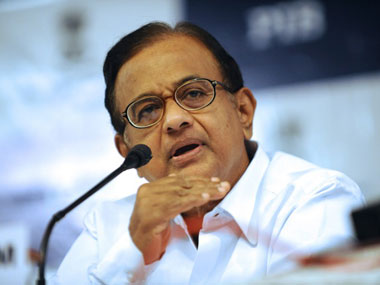By Seetha If you thought Finance Minister P Chidambaram deserved the pat he gave himself on his back for ensuring that the government spent only 96 percent of what it had budgeted in the current financial year (2012-13), think again. Given the state in which the government coffers are, even a 4 percent saving should be a reason for rejoicing. So the government should have earned kudos for spending only Rs 14,30,825 crore in 2012-13, instead of the Rs 14,90,925 crore it had planned. But look carefully at how Chidambaram got that savings. The budget papers reveal how. The government has spent 39 percent less than what it had planned to on capital expenditure. This is the more productive expenditure, which creates physical assets and has a beneficial trickle down across the entire economy. Against a spending target of Rs 2,04,816 crore, the government spent only Rs 1,67,753 crore. In contrast, the reduction in revenue expenditure (consumption spending on salaries, subsidies, interest payments, and other running expenses) was only 1.7 percent. Are things going to get better in the coming year? It doesn’t seem so. [caption id=“attachment_643976” align=“alignleft” width=“380”] AFP[/caption] While the targeted revenue expenditure for 2013-24 is set to increase by 13 percent over the revised spending in 2012-13, capital expenditure is budgeted to rise by only 4 percent. It would be wrong to say that all revenue expenditure is wasteful but the continuing trend of expenditure skew towards this head, at the cost of capital expenditure, is worrying. Worse, the trend could well continue. Capital expenditure is set to increase by only 4 percent while revenue expenditure will increase by 14 percent. And within revenue expenditure, interest payments and subsidies account for 45 percent of spending. In fact these two heads are eating up nearly 60 percent of the government’s revenues. What then is left for spending on creation of capital assets by the government, which is what will pull in private sector investments, which ultimately is what will get the economy getting back on to its feet again. P Chidambaram’s speech this year was noticeable for remaining largely silent on cutting the subsidy bill, barring a reference to the self-congratulatory statement about the Direct Benefit Transfer scheme. The DBT does not cut the subsidy bill, it merely ensures that cash payments are not diverted. The DBT and the Aadhaar card (which is supposed to ensure that payments go only to whom they are meant for) do not ensure that those earning Rs 1 crore a year do not get heavily subsidised LPG cylinders. All they will ensure is that the money meant for Anil Ambani does not go to Ratan Tata instead. The food subsidy bill continues to account for 38 percent of total subsidies. One saving grace is that the Rs 90,000 crore outlay includes a provisioning of Rs 10,000 crore for the Food Security Bill. But this could rise further. At the post-budget press conference, Chidambaram said that the provisioning for the Food Security Bill could change depending on the final form of the legislation. The bulk of the food subsidy burden is due to the high cost of the government procuring, storing and transporting foodgrains. This cost – the economic cost of subsidised foodgrains – has almost doubled from a little over Rs 1,100 crore a quintal in the case of rice in 2002-03 to around Rs 2,400 crore in 2012-13. In the case of wheat it has soared from Rs 900 a quintal to Rs 1900 a quintal over the same period. The price at which these foodgrains are sold in ration shops to below poverty line families has, however, remained unchanged since July 2002 – rice at Rs 565 a quintal and wheat at Rs 425 a quintal. One would have liked to hear the finance minister addressing issues like this in the budget as well as proof of the government’s determination to put public finances back in order. Unfortunately that was missing
The budget’s skew towards revenue expenditure continues unabated
Advertisement
End of Article
Written by FP Archives
see more


)
)
)
)
)
)
)
)
)



